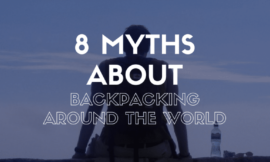
Contrary to popular belief, your body won’t explode if your space suit rips, your blood won’t boil, you won’t freeze and you won’t instantly close consciousness. You’ll experience a really bad sunburn, painless swelling of the skin and loss of consciousness due to lack of oxygen, but you won’t start dying until one or two minutes have passed.
So now that the exploding astronaut myth is out of the way, here are some other things to worry about, like Puffy-Face Bird-Leg Syndrome, relying on telehealth to save your life and being forced to drink sweat.
1. Puffy-Face Bird-Leg Syndrome
Two-thirds of our bodies are made up of fluids. On Earth, gravity pulls most of it towards our legs. In space, that fluid (about a litre per leg) travels towards the head, giving you chicken legs and a bloated head. Your eyes will become red and swollen, your leg muscles will atrophy, your bones will weaken, your neck veins will stand out more and your nose and sinuses may become blocked.
- Your Fingernails Will Probably Fall Off
Fingernail trauma and hand injuries are the most common nuisance for spacewalkers. The rigid nature of the gloves keeps the pressure at a safe level, but it also leads to intense pain and a good chance your fingernails will either snag and fall off, of just fall off. If that happens, you might also develop a bacterial or yeast infection in the exposed nailbeds. If your nail eventually grows back, it’ll probably be deformed.
- Space Food is Gross
There are no refrigerators in space, so most food can’t be eaten in its natural form. Even salt and pepper have to be in liquid form so they won’t float away and clog air vents, contaminate equipment or get stuck in your eye. Here’s a sample menu:
Breakfast – Rehydratable granola with raisins
Lunch – Thermostabalized rice with butter
Dinner – Irradiated beef steak
You’ll Be Drinking Everyone’s Sweat
Astronauts lose water when they breathe and sweat (not shocking), but the gross thing is that these vapors are eventually condensed and returned to the general water supply.
You Can’t Go to the Doctor
If your lung collapses while you’re on a spacewalk, or if you break or bone or develop kidney stones, you can’t just head over to the emergency room. You’ll first have to diagnose yourself using a tiny ultrasound machine, then send those images back to Earth via telehealth technology so doctors can guide you through whatever procedure you need. That takes patience and trust, which is tough to have in an emergency.
Sponge Baths are the Only Option
Because there are no showers in space, personal hygiene is tricky. You’ll have to wash your hair with a rinseless shampoo, brush your teeth with NASA’s safe-to-swallow toothpaste and take sponge baths daily.
You Might Have to Fight for a Bed
On a space shuttle, there are usually more people than there are beds. So if you aren’t lucky enough to get one of the four bunks, you’ll have to jump in your sleeping bag and pass out in the commander’s seat, the pilot’s seat, or attached to a wall like a creepy space cocoon. Plus, the sun rises every 90 minutes during a mission so good luck getting a good night’s sleep.
Sneezing in Space is Messy
If you have to sneeze, which you probably will, it’s best to do it inside the shuttle or space station. Sneezing inside a spacewalk helmet can get real messy, with green goo sprayed all over the windshield and no way to clean it.
Peeing Isn’t Easy
When using a space shuttle toilet, astronauts have to position themselves using leg-restraints and thigh-bars. Then, they grab their own personal urinal hose and do their business, either sitting down or standing up. The toilet basically vacuums the waste into a holding unit where solid wastes are compressed and stored. Liquids are released into space before re-entering the atmosphere. This is what it looks like:
You Can Only Change Your Pants Every 10 Days
If you’re a shuttle astronaut, you get a change of clothing for every day. But if you aboard the space station, you’re allowed to change your pants every 10 days, your exercise clothes every 3 days, your underwear every other day and your thermal socks every month. You also get two sweaters which have to last you the entire trip. Once a piece of clothing is worn as many times as possible, it goes in a bag that’s eventually placed in the Progress resupply vehicle, which burns up when it re-enters the Earth’s atmosphere.




